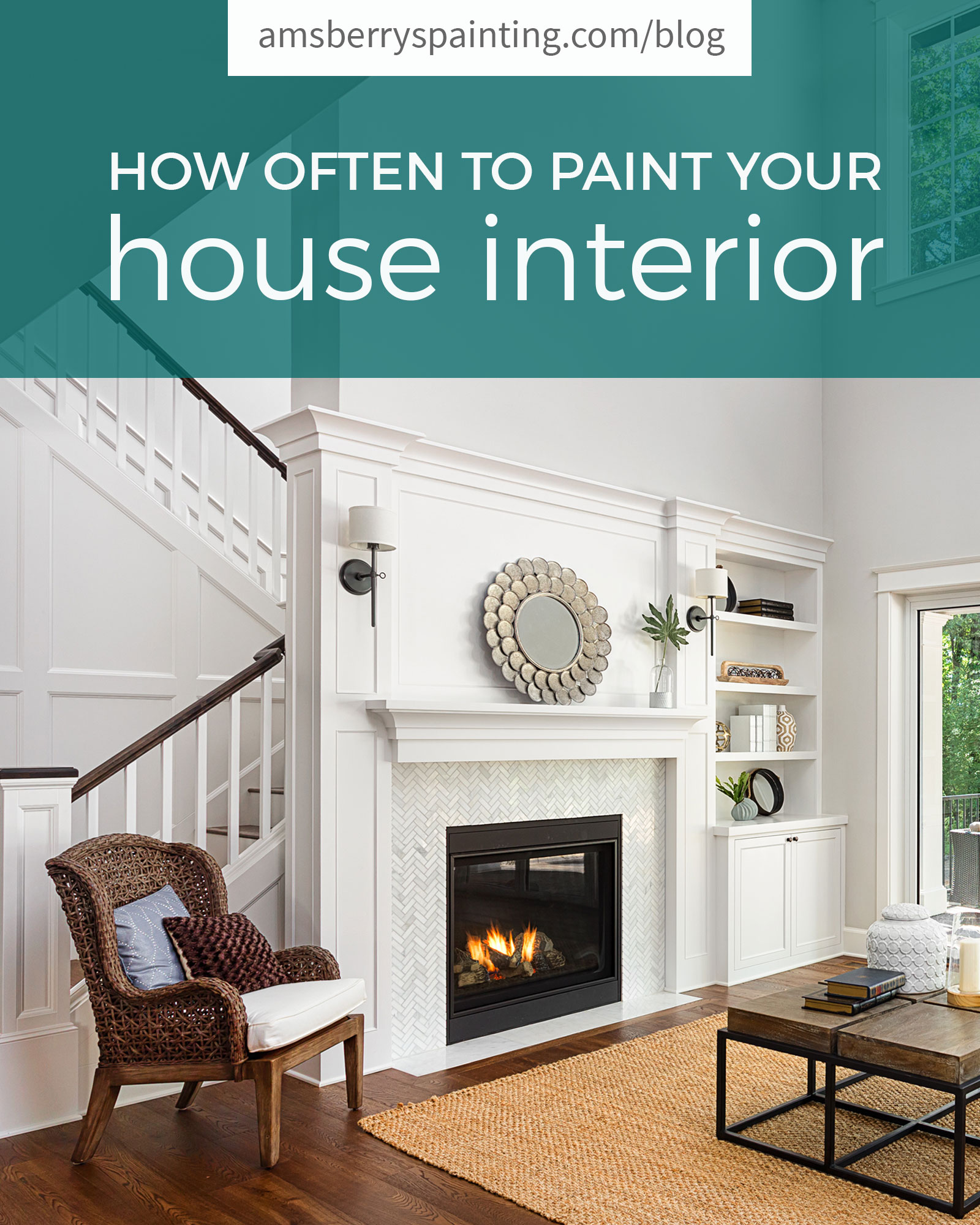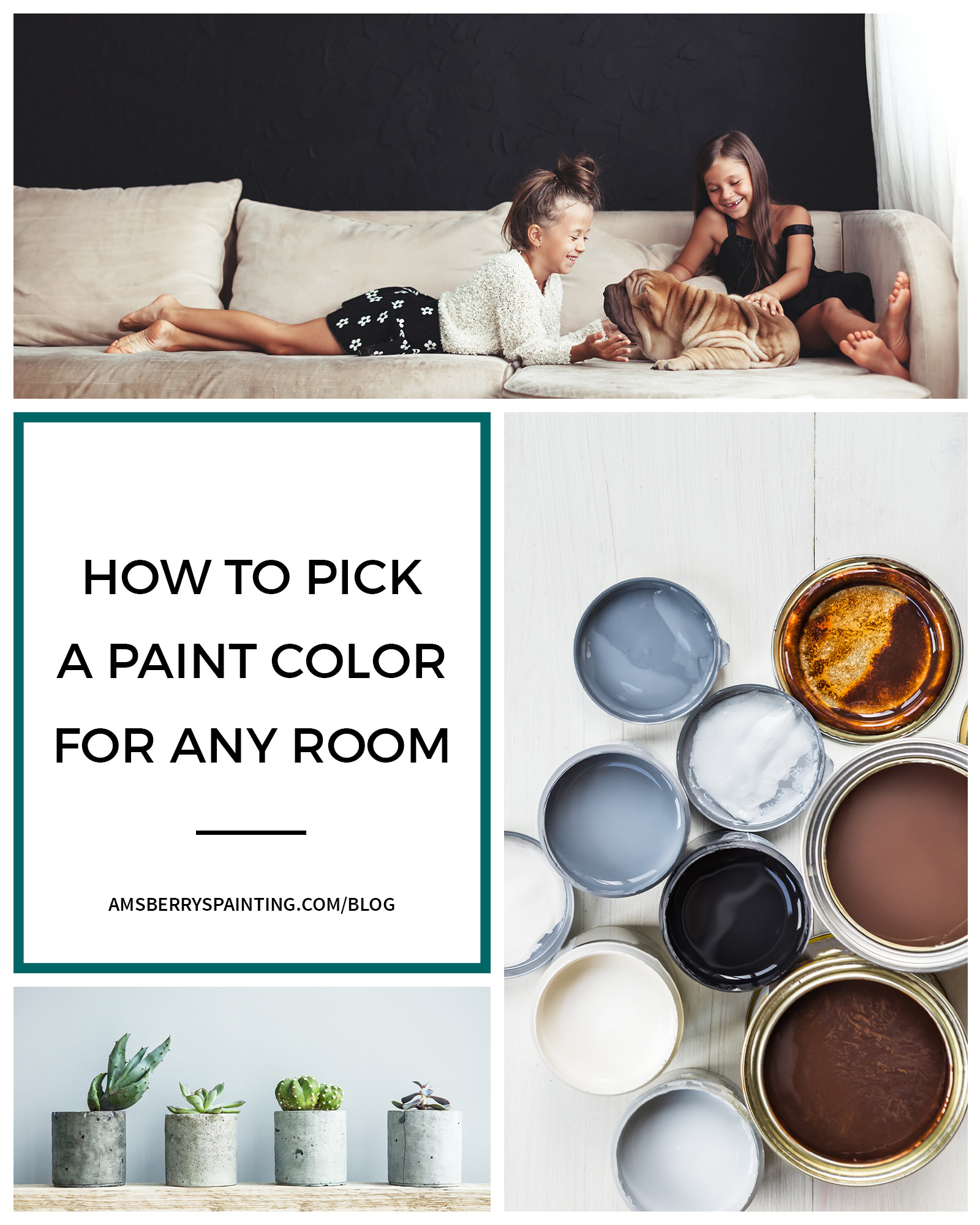
18 Feb How Often to Paint Your House Interior
Some activities make the need to repaint your house more obvious than others do: Wiping off the food the little one threw at the wall, realizing the art piece your in-laws gave you clashes horribly with your wall color, the chip or dent in the entryway from a suitcase years ago, the light hitting the living room just right — these are all telltale signs that it’s time to repaint your interior.
While it may be less exposed to the wear and tear of the elements than the exterior of your house is, your interior goes through a lot. Your entryway witnesses a lot of coming and going, the bathroom paint takes some water damage, and the kitchen walls go through a lot of cleaning products. Knowing when it’s time to repaint the interior of your house depends a lot on the space in question.
ENTRYWAY/FOYER
As a general rule of thumb, it’s good to re-evaluate the state of your entryway, foyer, and hallways every 3-4 years. As these parts of your house generally see more activity than other areas, they’re the most likely to suffer the most damage as a result of the traffic of pets, children, guests, and large items. In all that coming and going, it’s easy to chip the exposed corners that generally exist at the edges of foyers and hallways. This also explains why many people choose to repaint their hallways or foyer when going through the process of buying a new house — the previous tenant could have caused some unintended damage in the moving out process.
LIVING/DINING ROOM
While the activity happening in the space is certainly a factor in deciding the next repainting date, it certainly isn’t the only factor. In many homes, living and dining rooms are popular spaces in the home, which receive a lot of high traffic from family members. However, because the activities in these spaces are generally more formal, the walls aren’t going to take as much damage as the hallways that feed into them. In general, these spaces also tend to be painted in darker color schemes, which are a little more fade-resistant. Because of these mixed factors, it’s safe to re-evaluate the state of the wall finish every 5-7 years.

BEDROOMS
The repainting needs in a bedroom similarly depend on what the space is being used for. If the walls of your young kid’s bedroom are taking more damage over the years, they could require attention in as early as 2-3 years after the most recent repaint. That number will stretch and shrink as your child continues to develop: A nursery or a bedroom belonging to a seventeen year-old are going to need less maintenance than the one belonging to a nine year-old. A nice coat of paint in a master suite or guest bedroom, however, can last up to 8 years.
KITCHEN/BATHROOMS
Moisture, humidity, and cleaning products wear away at paint faster than many other factors. Aside from being very high-traffic areas, the kitchen and bathrooms take on more moisture than any other room in the house. Because of this, they tend to need attention every 3-4 years. As high-traffic areas of the house, it’s important to keep an eye on the condition of these spaces.

NEW COLORS
If you’ve been wanting to change the color of your walls since you moved in but haven’t been able to find a reason to do so, look no further! The desire to have a home that matches your personal preferences, needs, and wants makes now a great time to repaint your walls. If the burnt orange accent wall that the previous tenant contributed isn’t your style, we can help.
THE PROCESS
The most important parts of making a coat of paint last depend entirely on the painters: Prep work and product knowledge. When preparing to paint the interior of a home, we at Amsberry’s Painting practice prep work that is meant to make the work last as long as possible. In addition to repairing cracks and missing pieces in the walls, we always use primer before applying two coats of paint.

In addition to the use of prep work, our painters and project managers are well-versed in the products that we use. While many interior designers will instruct unsuspecting homeowners to use a flat sheen in their kitchen for the aesthetic quality, we understand that a high sheen (such as eggshell or semigloss) should be used in moist spaces such as the kitchen and bathrooms, and will always direct a homeowner toward a sheen decision that will make the quality of our work last longer.
CONCLUSION
Here at Amsberry’s Painting, winter is in full swing and we’re booking interior jobs until spring rolls around. If you’ve realized after studying the walls of your home that you’d like to freshen up your interior, book a free estimate today!

Writer Bio: Ellen Coy
Ellen has held both the Office Assistant and Office Manager positions at Amsberry’s Painting, and is currently a student of The King’s College in New York City. She loves reading, writing, and The Pacific Northwest. She can usually be found with a cup of tea.




